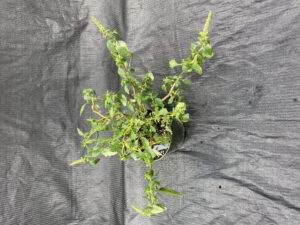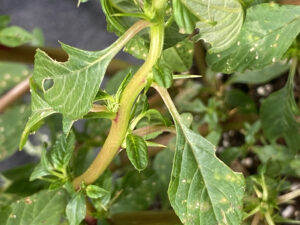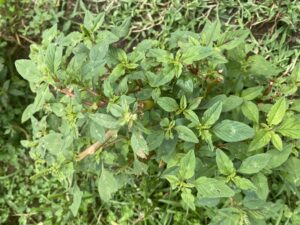Spiny Amaranth – Weed ID Wednesday
go.ncsu.edu/readext?793298
en Español / em Português
El inglés es el idioma de control de esta página. En la medida en que haya algún conflicto entre la traducción al inglés y la traducción, el inglés prevalece.
Al hacer clic en el enlace de traducción se activa un servicio de traducción gratuito para convertir la página al español. Al igual que con cualquier traducción por Internet, la conversión no es sensible al contexto y puede que no traduzca el texto en su significado original. NC State Extension no garantiza la exactitud del texto traducido. Por favor, tenga en cuenta que algunas aplicaciones y/o servicios pueden no funcionar como se espera cuando se traducen.
Português
Inglês é o idioma de controle desta página. Na medida que haja algum conflito entre o texto original em Inglês e a tradução, o Inglês prevalece.
Ao clicar no link de tradução, um serviço gratuito de tradução será ativado para converter a página para o Português. Como em qualquer tradução pela internet, a conversão não é sensivel ao contexto e pode não ocorrer a tradução para o significado orginal. O serviço de Extensão da Carolina do Norte (NC State Extension) não garante a exatidão do texto traduzido. Por favor, observe que algumas funções ou serviços podem não funcionar como esperado após a tradução.
English
English is the controlling language of this page. To the extent there is any conflict between the English text and the translation, English controls.
Clicking on the translation link activates a free translation service to convert the page to Spanish. As with any Internet translation, the conversion is not context-sensitive and may not translate the text to its original meaning. NC State Extension does not guarantee the accuracy of the translated text. Please note that some applications and/or services may not function as expected when translated.
Collapse ▲Spiny Amaranth, commonly called spiny pigweed, can grow up to 5 ft tall, leaves and stems may have a reddish tint, and have two sharp spines at each node. A heavy stand of spiny pigweed is a strong indicator of needing to revisit your stocking rate, grazing plan, and soil fertility management plan.
Because of its growth pattern and lack of palatability, spiny pigweed is picked over when animals graze and is left to outcompete more desirable forages. It is found more often in pastures that are overgrazed because it has more space to grow and less competition.
Pigweed is considered potentially dangerous to livestock because it is associated with nitrate accumulation. Nitrate accumulation is more likely in situations of plant growth stress- like droughts or heavy fertility. The risk of consumption is much lower if they have other things to graze, as they will usually choose to not eat something spiny and unpalatable. If they are left with less to graze, they may be pressured into eating enough pigweed to be of concern, which can lead to death.
Mowing can help reduce the number of seeds produced that year, but it has been found that even short, damaged plants can still produce seeds. Hand removal is possible in smaller pastures and populations. Be sure to bag up the plants you are removing so the seeds aren’t left behind in the field or spread further as you’re leaving. A good pair of gloves and a spade will help with hand removal.
Chemical control can be effective with proper timing, as it is much easier to control a smaller, more tender plant than a larger one. Scout your pastures and find them before they get too tall and strong!
Seeing a dense stand of spiny pigweed in your pastures should begin the thought process of what changes you might need to consider. Ask yourself these questions to start:
- Have you taken a soil sample in the last three years?
- If you have taken a soil sample recently, did you apply lime and fertilizer per those recommendations?
- What measures do you take to ensure that your pasture is not overgrazed?
- What is your stocking rate? (# of animals per acre)
- Do you rotate pastures?
- How short is your grass when you rotate?
These questions are a great starting point for re-evaluating your management plan for your pastures. Reach out to your local extension agent to continue this conversation.
The best thing to do is to use a multi prong approach- consider using chemical control where stands are dense, hand remove where feasible, re-evaluate grazing and fertility plans, and keep scouting your pastures!







